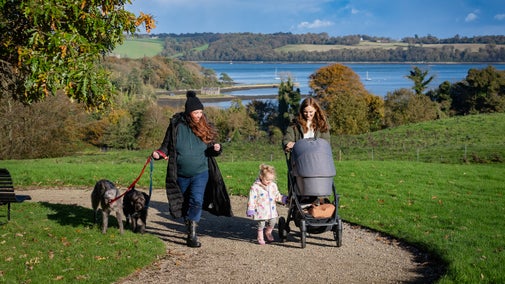The monk and the merchant walk
Isle of Wight
Take a circular walk passing the Oratory, with views of the Hoy Monument. Discover Wydcombe woods and spot rare wildlife that lives in the habitat including the orange ringed dragonfly. Find out more about the monk and the merchant as you complete this trail.
Start point
Blackgang Viewpoint car park, grid ref: SZ490767Trail information
More near here
Tip of the Wight walk
A 3.5-mile walk around the southern-most tip of the Isle of Wight that takes in sweeping views of the island.

Views of Ventnor walking trail
Enjoy far-reaching views of the downs and the English Channel, as well as a rich blend of wildlife, on this short but challenging walk on the south side of the Isle of Wight.

Ventnor Downs prehistory and wartime walk
This short but challenging walk on the south side of the Isle of Wight takes in a Bronze Age burial site and reminders of the island's wartime history.

Get in touch
Our partners

We’ve partnered with Cotswold Outdoor to help everyone make the most of their time outdoors in the places we care for.
You might also be interested in
St Catherines Down and Knowles Farm The Monk and Merchant walk GPX file
Right-click and 'Save Link As' or ‘Save Target As’ or ‘Download Linked File As’ (depending on your browser) to download this The Monk and Merchant walk GPX file to your device, then open with your GPS program.
Things to see and do at St Catherine's Down and Knowles Farm
With such a varied landscape in a relatively small area, St Catherine's Down and Knowles Farm is perfect to explore by foot, bicycle or with your four-legged friend.

History of St Catherine's Down and Knowles Farm
From shipwrecks to tsars and making waves in radio technology, St Catherine's Down and Knowles Farm has witnessed a lot throughout its history.

Cotswold Outdoor: our exclusive walking partner
Learn about the National Trust’s ongoing partnership with Cotswold Outdoor. Find out how they help us care for precious places and the exclusive discount available for National Trust supporters.

Follow the Countryside Code
Help to look after National Trust places by observing a few simple guidelines during your visit and following the Countryside Code.

Staying safe at National Trust places
The special places in National Trust care sometimes come with a few risks for visitors, be it coastline or countryside. Find out how to keep safe throughout your visits.

Family-friendly walks
Take a family-friendly walk along these trails suitable for pushchairs and children. On the way, you can go wild in natural play areas and compete in woodland den building.

Top tips for coastal walks
Get safety tips for walking by the coast, including the essential clothing and equipment to take with you and what to do before you set out.




